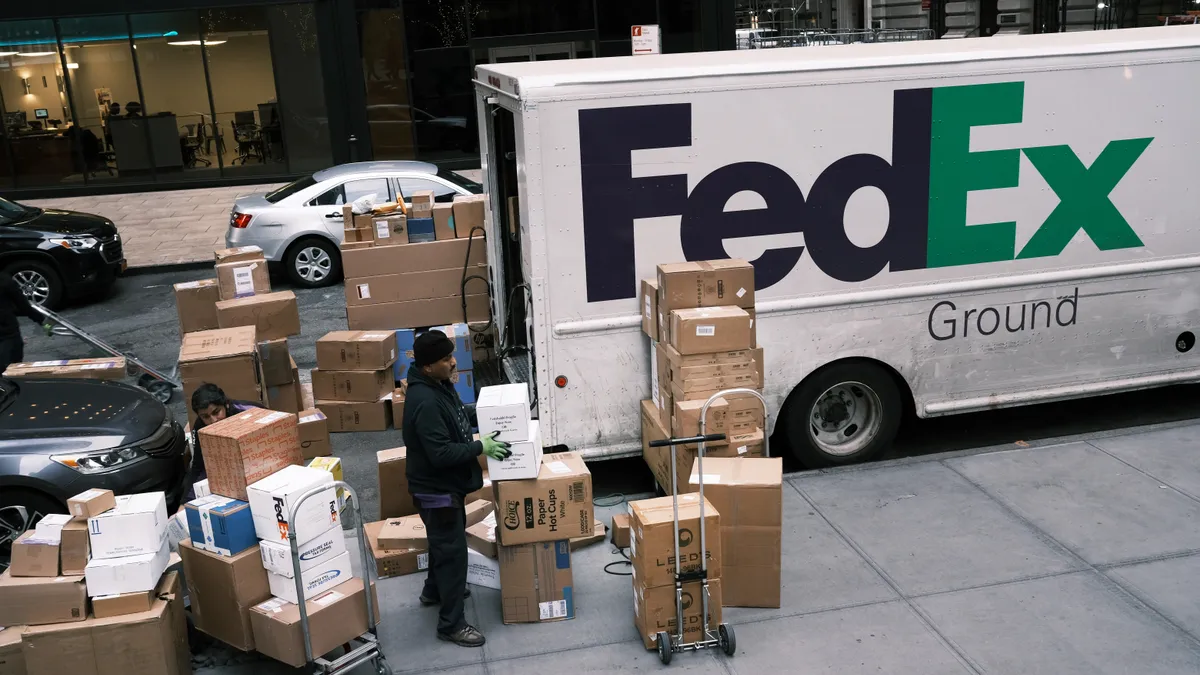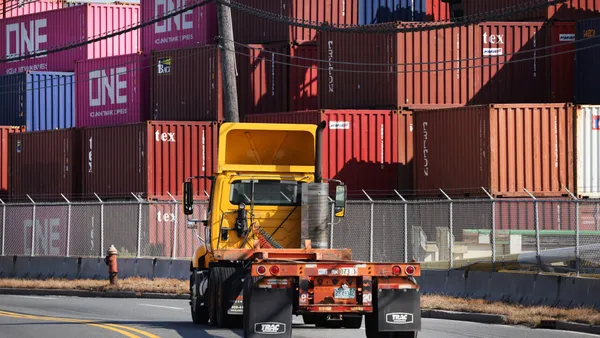Dive Brief:
- Ground delivery costs are forecasted to jump 2.6% year over year in Q2 as parcel shippers continue to grapple with rate increases and added fees from UPS and FedEx, according to the TD Cowen/AFS Freight Index.
- Per-package ground delivery rates will reach 29.5% above the index's January 2018 baseline for the quarter, TD Cowen and AFS Logistics project. That marks a decline from the record-high 31.3% average reached in Q1 when more rate hikes and higher fuel surcharges took effect.
- Despite pricing pressures, customers have had opportunities to lower their shipping costs, according to the index. The average discount shippers received on ground parcel delivery rates increased by 1.9% from Q4 2024 to Q1 2025.
Rate increases, surcharges heat up ground shipping costs
Dive Insight:
Q1 ground delivery prices exceeded TD Cowen and AFS Logistics' previous expectations, which had factored in a low-demand and highly competitive parcel shipping environment. A bevy of surcharge increases from major carriers outside annual rate increase cycles are driving much of that pricing pressure, Mingshu Bates, AFS’ chief analytics officer and president of parcel, said in an interview.
"The changes are coming more often," Bates said. "You don't have much lead time to prepare for it, and then the changes and not so much that, 'Hey, your rate is going to go up 3%.' No, it's really way more subtle than before."
One example is frequent adjustments UPS and FedEx have made to their fuel surcharge calculations over the past year. From Q1 2024 to Q1 2025, the ground fuel surcharge at UPS jumped 15% and FedEx's increased 12%, according to a news release announcing the Q1 index. The price of diesel fuel, which influences the surcharge, fell 8.4% over the same period, the release said.
Additional fees from UPS and FedEx are driving increased interest for alternative delivery options, particularly among larger shippers, Bates said. The U.S. Postal Service and smaller carriers could benefit from this trend, but shippers may also switch to lower-cost options within FedEx and UPS' product portfolios, she noted.
With no shortage of delivery options for shippers to choose from, heightened discounting activity could continue in Q2 as FedEx and UPS look to retain customers and attract more volume into their networks. Shippers will be pushing to negotiate lower rates after seeing the impact rate increases had in Q1, Bates said. However, discounts can only increase for so long until carriers determine they are not worth it for their bottom lines, she added.
"We are still seeing aggressive discounting, but I think we're getting closer to a tightening of the pricing discipline," Bates said.
As for express parcel delivery services, the rate per package in Q2 is expected to reach 3.1% above the January 2018 baseline, down 1.4% year over year. Express shipping products are facing pressure from new competitors, such as the Postal Service's Priority Next Day offering, and shippers eyeing lower-cost ground options, per the index.














